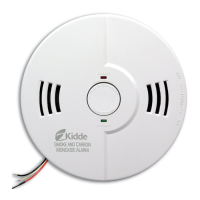26
The following conditions can result in transient CO
situations:
Excessive spillage or reverse venting of fuel-burning
appliances caused by:
• outdoor ambient conditions, such as wind direction
and/or velocity, including high gusts of wind, and
insufficient draft in the vent pipes
• negative pressure differential resulting from the use
of exhaust fans
• simultaneous operation of several fuel-burning
appliances competing for limited internal air
• loose vent pipe connections from fuel-fired
appliances
• obstructions, or unconventional vent pipe designs
that can amplify the above situations
• poorly designed or maintained chimneys and/or
vents
• Extended operation of unvented fuel-burning
devices (range, oven, fireplace, etc.)
• Temperature inversions that can trap exhaust gases
near the ground
• Car idling in an open or closed attached garage, or
near a home
Every year, have the heating system, vents, chimney
and flue inspected and cleaned by a qualified
technician. Always install appliances according to
manufacturer’s instructions and adhere to local building
codes. Most appliances should be installed by
professionals and inspected after installation. Regularly
examine vents and chimneys for improper connections,
visible rust, or stains, and check for cracks in furnace
heat exchangers. Verify that the color of flame on pilot
lights and burners is blue. A yellow or orange flame is
a sign that the fuel is not burning completely. Teach
all household members what the alarm sounds like and
how to respond in an emergency.
Carbon Monoxide Safety

